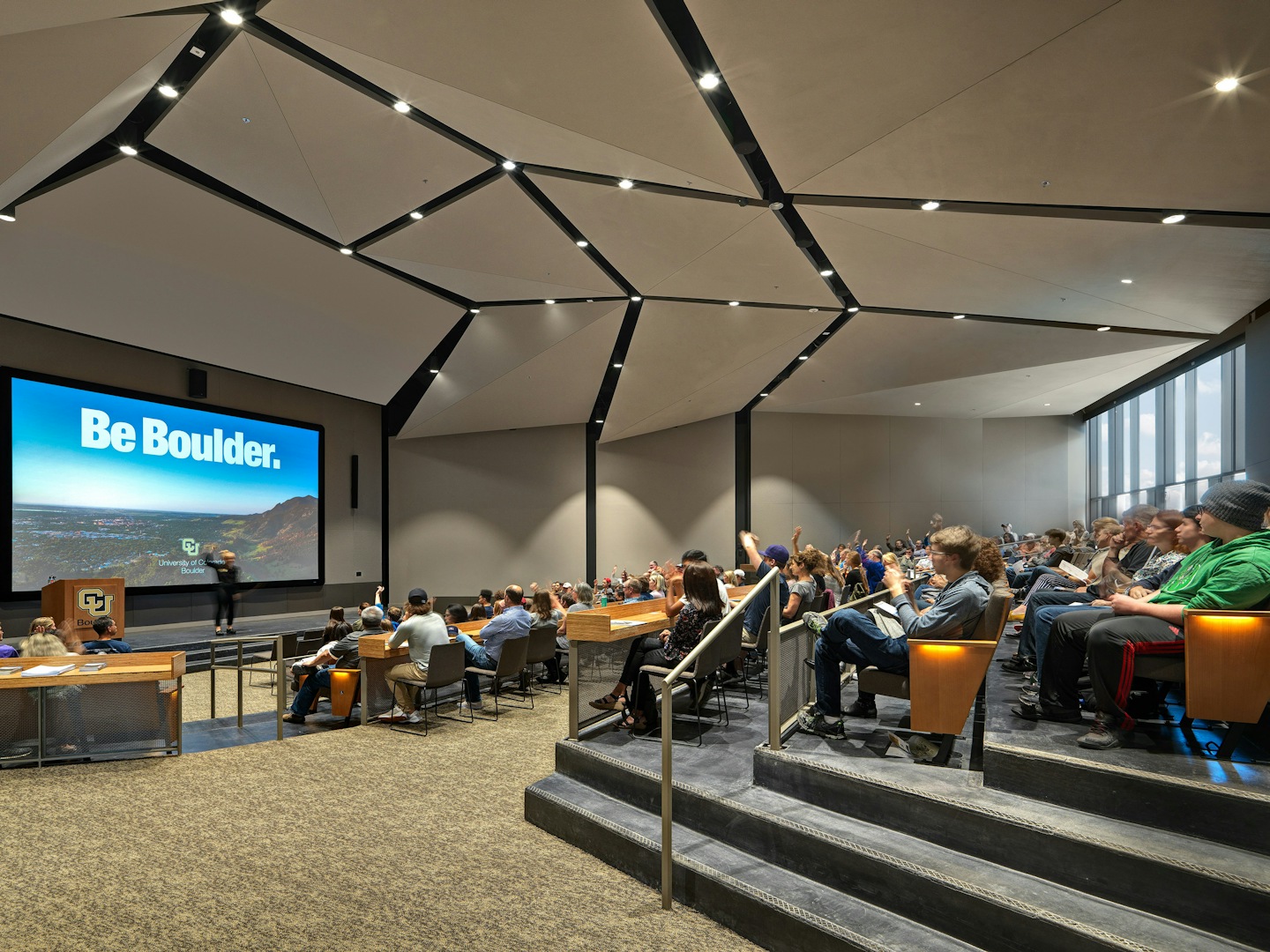The days of yawning through 300-person college lectures are becoming a distant memory. In fact, both students and educators have been moving away from traditional lecture hall-style learning spaces for years.
As GenZ (also known as iGen) students arrive on campus, they are driving even further changes in the way colleges house and educate them. This is a generation for whom screens have replaced books, a generation that struggles mightily with stress and isolation, and a generation who is taught more about soft skills and emotional intelligence than their predecessors. Today, OZ Architecture is taking all this into account to realize a next-generation of successful learning environments — environments that no longer hinge upon the large-scale lecture hall.
There are several ways that learning spaces are continuing to adapt for new generations:
Small group work is critical. Small group work settings, sometimes known as SCALE-UP classrooms (short for Student-Centered Active Learning Environment for Undergraduate Programs) offer students more hands-on learning and problem-solving opportunities and instructor interaction. These spaces are designed with a handful of six-person tables around the room’s perimeter, modern connectivity throughout, and circulation room for interaction and instruction. The new OZ-designed Center for Academic Success and Engagement (CASE) on CU Boulder’s campus features classrooms like this, with glass fronts for greater visibility, thoughtful proportions and plenty of circulation space. These adjustments result in a space that supports and encourages more student collaboration, which is important for a generation known for feeling isolated.
Technology is changing. This might not come as a shock, but technology continues to drive the design of higher education spaces. Large-scale lecture halls often have tablet arms on fixed chairs, which save space but can be difficult for laptop users to manage (in today’s world, nearly every student uses a laptop in class). Providing distributed electrical outlets so students can power their devices within a learning space has become mandatory for student engagement. Classrooms must be designed so that teaching—and learning—can evolve over time with the introduction of new learning technologies. While this might look like a lecture hall with more flexible furniture and larger work surfaces, it more often takes shape in a smaller room with space to plug in for technology-assisted learning (or, conversely, to unplug for creative brainstorming sessions).
Environments must support various postures. Education has come far enough that professors realize that talking at a stadium of sleepy 19-year-olds isn’t always the best way to support enriched learning. Rather, the key is to reach as many students as possible by tapping into different learning styles and postures. Traditional lecture halls are rigid with inflexible seating in a fixed arrangement. A more contemporary approach would be to place seated stations towards the front of a flat-floor classroom, with taller stations for standing or sitting in the back. This type of design helps to maintain sight lines, achieves greater flexibility, and provides options for students to choose sitting or standing positions based on their preferences.
That said, great design and thoughtful adjustments can make even a large-scale lecture space successful. Designs that feature a theatre-in-the-round approach, with the presenter in the middle of the space, puts them closer to the students making it easier for them to connect with their class than if they are front and center and dozens of rows away. By altering the layout, a simple design decision like this can encourage a more successful learning environment.
Most campuses have a center for teaching and learning, which is a group that tests and prototypes new learning environments for the campus. Often, they will adapt existing classrooms to experiment with different learning styles across the spectrum from lecture to SCALE-UP.
There is, of course, still a need for large auditorium spaces on a college campus. While the spaces do host lecture classes, they are increasingly being used for large group events, such as symposia, panels or film screenings. For example, the CASE building on CU Boulder’s campus includes a 300-person auditorium designed for campus admissions with both fixed and moveable seating, making it perfect for presentations to prospective students as well as hosting special events.
While there are arguments for keeping lecture halls around, today’s classroom designers are taking into account the notion that hands-on work, technology integration and flexibility are chief among the characteristics that make modern learning environments successful.
